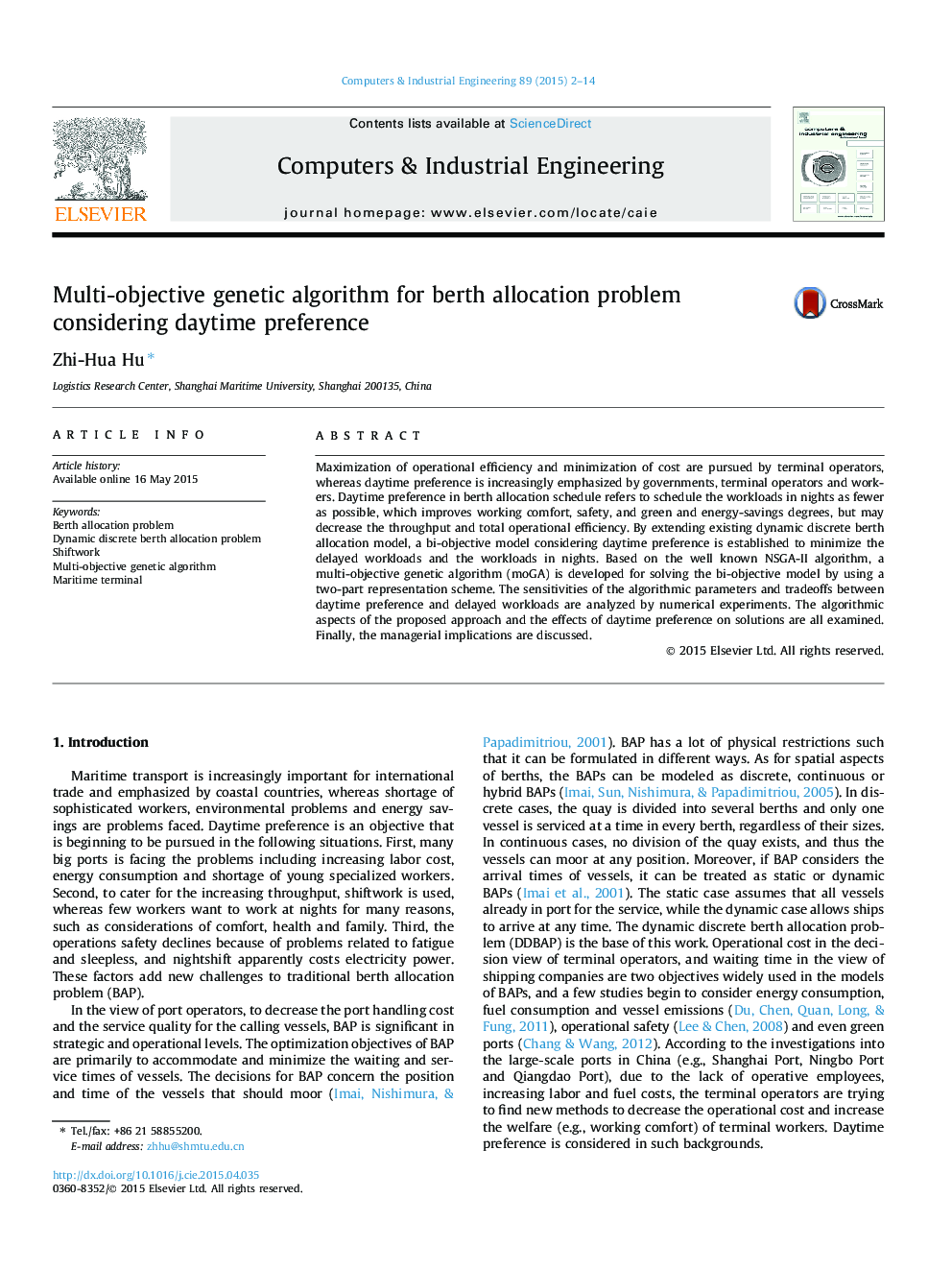| Article ID | Journal | Published Year | Pages | File Type |
|---|---|---|---|---|
| 1133465 | Computers & Industrial Engineering | 2015 | 13 Pages |
•Daytime preference is identified as an objective of berth allocation problem.•Delayed workloads and workloads operated at night are minimized.•A multi-objective genetic algorithm is developed to solve the bi-objective model.
Maximization of operational efficiency and minimization of cost are pursued by terminal operators, whereas daytime preference is increasingly emphasized by governments, terminal operators and workers. Daytime preference in berth allocation schedule refers to schedule the workloads in nights as fewer as possible, which improves working comfort, safety, and green and energy-savings degrees, but may decrease the throughput and total operational efficiency. By extending existing dynamic discrete berth allocation model, a bi-objective model considering daytime preference is established to minimize the delayed workloads and the workloads in nights. Based on the well known NSGA-II algorithm, a multi-objective genetic algorithm (moGA) is developed for solving the bi-objective model by using a two-part representation scheme. The sensitivities of the algorithmic parameters and tradeoffs between daytime preference and delayed workloads are analyzed by numerical experiments. The algorithmic aspects of the proposed approach and the effects of daytime preference on solutions are all examined. Finally, the managerial implications are discussed.
